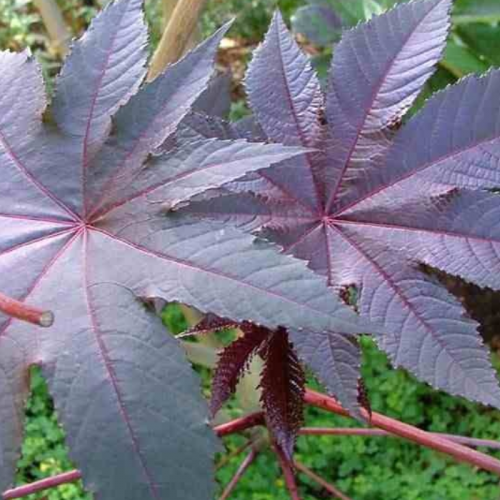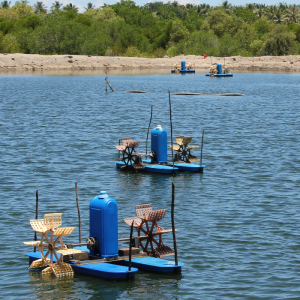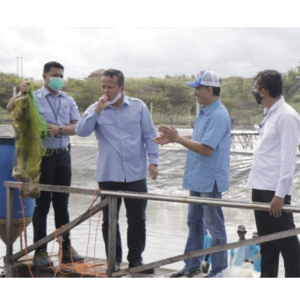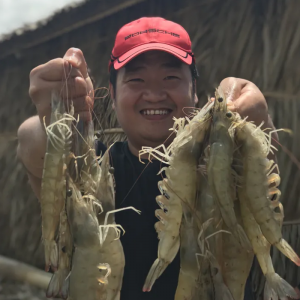
Increasing Immunity to Acute Hepatopancreatic Necrosis in Shrimp by Castor Extract
| Tue, 15 Oct 2019 - 11:03

To evaluate the positive effect of castor extract on the resistance to AHPND (Acute hepatopancreatic necrosis disease) in white shrimp, the research team Tran Thi Tuyet Hoa, Vo Tan Huy, Hong Mong Huyen, Can Tho University The poem states that adding 1.0% castor oil extract to shrimp feed gives the highest survival rate when infected with the bacteria that cause hepatopancreatic necrosis.
Pancreatic necrosis liver disease acute ( Acute hepatopancreatic necrosis disease - AHPND) is V. parahaemolyticus bacterial disease caused. V. parahaemolyticus is a gram-negative bacterium, common in brackish / saltwater environments. AHPND was determined to have a mortality rate of up to 100% within 20-30 days after stocking. Diseased shrimp show signs of lethargy, anorexia, hepatopancreas atrophy, chewy and pale color, hollow or broken gut. In addition, accompanied by other signs such as soft shell, dark and speckled on the breast shell, histological analysis showed that the disease mainly affects the hepatopancreas of shrimp (Lightner et al ., 2013). .
Improper use of antibiotics and chemicals in disease treatment has led to many negative effects that cause difficulties in aquaculture development. To overcome this situation, the herb used in the study of antibiotic substitution has brought little benefit (Johnson and Banerji, 2007).
From research on screening herbs against vibrio bacteria in laboratory conditions. The results showed that Castor is resistant to V. parahaemolyticus with the largest sterile ring diameter (17 mm to 18 mm), from which castor was selected for this study.
Castor also called papaya purple, with the scientific name Ricinus communis L . The tree can be 3-4 m tall or more, trunk is cylindrical, smooth, green or burgundy.
Rampadarath et al . (2014) suggested that castor leaf extract has high antibacterial activity, can inhibit gram-negative and gram-positive bacteria (Bacillus algicola , Listeria innocua , Viridibacillus arenosi , Escherichia coli).
The study of Immanuel et al . (2004) used castor extract to feed Penaeus indicus (PL30) shrimp continuously for 30 days. The results showed that the survival rate of shrimps in the supplementary treatment with castor extract (58.88%) was higher than the control treatments (24.44%).
This study was conducted to determine the appropriate concentration of shrimp feed supplement to enhance immunity, resist pathogens from there, increase survival rate when infected with V. parahaemolyticus.
The study was conducted with four treatments of high extracting added to feed for whiteleg shrimp at level 0; 0.5; 1.0 and 1.5% within 30 days. Growth rate, hematological index, phenoloxidase activity (PO), superoxide dismutase activity (SOD) and resistance to V. parahaemolyticus of vannamei were determined on day 30 of the extract extract.
Then 15 shrimp were randomly taken from each treatment in experiment 1 to be challenged with V. parahaemolyticus , and a positive control without supplementation with extract and V. parahaemolyticus . The experiment followed up for 14 days.
Result
Adding castor extract to whiteleg shrimp feed with a supplement of 0.5% and 1.0% extract for 30 days: helps boost immune parameters (THC, GC, HC and PO activity ) and increase the survival rate of vannamei when infected with V. parahaemolyticus.
Specifically, for the additional treatment of 1.0% of the castor extract, the lowest cumulative mortality after 14 days of follow-up was 26.7%, followed by treatments 0.5 and 1.5%, respectively. with 51.1 and 57.8% respectively; the highest cumulative mortality was the positive control (66.7%).
The ratio of Vibrio bacteria density / total bacterial density in shrimp hepatopancreas in the supplemented treatment was 1.0% lower and lowest with 27.2%, compared to the remaining treatments, followed by the treatment. additional 1.5% (35.9%); 0.5% (41.7%) and 0% (91.1%).
Results from the study showed that supplementing with 1.0% castor oil extract increased immunity and survival of whiteleg shrimp when infected with V. Parahaemolyticus.
Source : tepbac.com






















